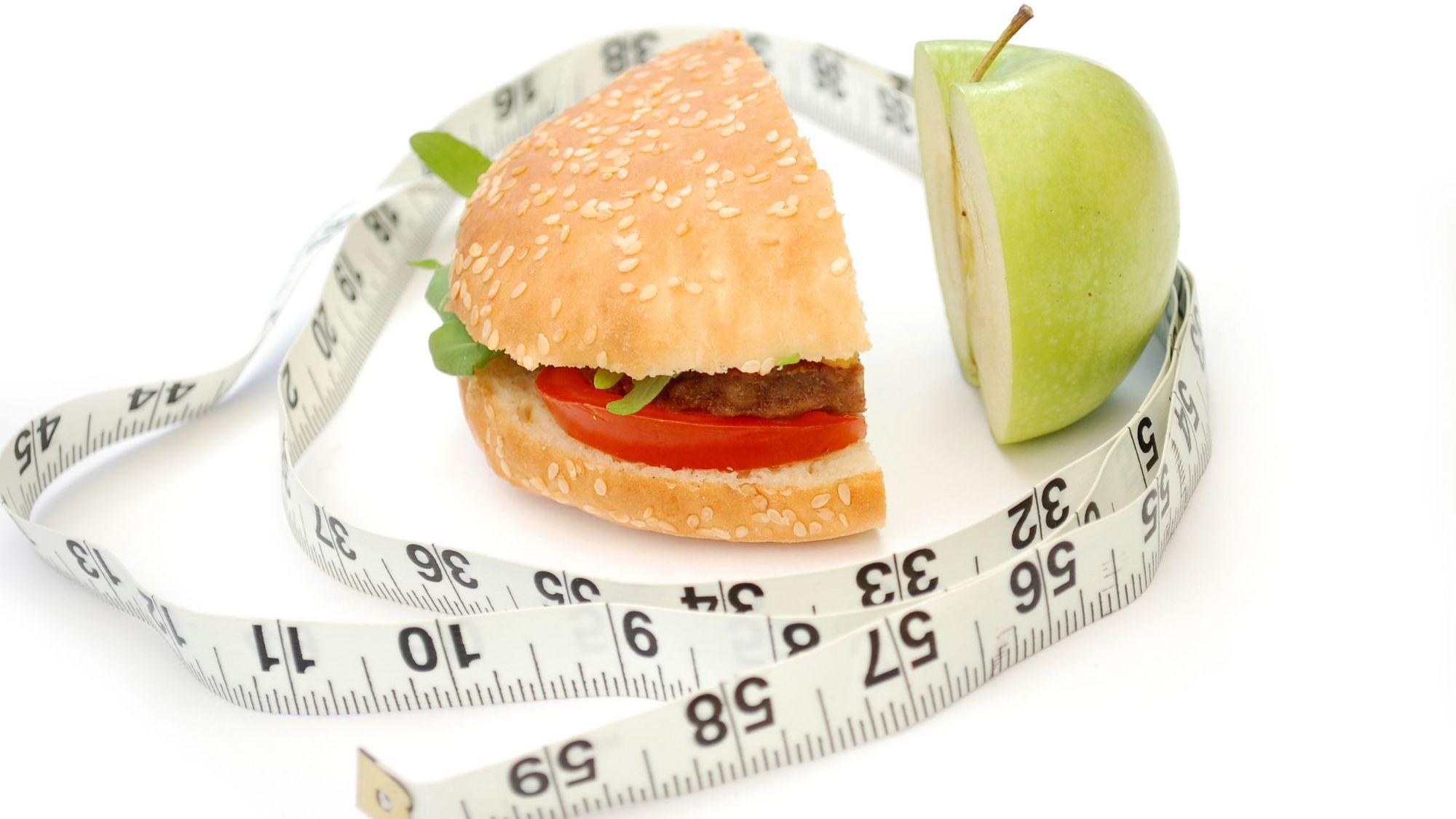
You’ve probably already heard of counting calories, but what about counting macros?
Whether you want to lose weight, gain muscle, or simply adjust to a healthier body composition, paying closer attention to what you eat is crucial. Counting calories is a good way to start implementing a caloric deficit strategy into your routine. It can ensure you consume less energy than your body expends, so you begin to tap into fat reserves for additional fuel.
However, calorie counting is not a fool-proof method for weight loss, as it doesn’t consider the type of foods you’re eating to fill your energy requirements. What’s more, many people find this strategy to be too restrictive. While you may be able to reduce your calorie intake temporarily by cutting out calorie-dense foods, most of us find it difficult to count calories permanently.
Counting macros is a slightly more flexible way of managing your weight. This method involves looking at ways to get the right balance of macronutrients (fat, protein, and carbohydrates) into your diet.
With macro counting, it’s still possible to lose weight or gain muscle, but you’re also more likely to end up with a much more nutrient-dense, balanced diet, which addresses all of your body’s needs.

What are Macros? Counting Macros vs Counting Calories
Macros are “macronutrients” – the crucial components included in virtually any diet.
While different methods for counting macros can take various macronutrients into account, such as alcohol, and fiber, the majority focus on three core areas: carbohydrates, proteins, and fats.
Whether you’re trying to lose weight, maintain your current body composition, or gain muscle, your diet should always include a healthy balance of these nutrients. Our bodies need carbohydrates, fats, and proteins to build cells, produce energy, and thrive.
Counting macros means tracking the number of macronutrients included in your diet, rather than focusing entirely on calorie intake. When you count calories, you simply ensure you’re getting a certain amount of energy each day from your food. When you count macros, you consider your body’s unique needs for certain levels of protein, carbohydrates, and fats.
One of the best things about counting macros instead of just counting calories, is that it allows you to adjust your diet to suit your specific requirements and goals. For instance, if you want to gain muscle, you may increase your protein intake, but cut down on fat. If you’re trying to lose weight, you may reduce fat and carbohydrate consumption.
Many popular diets, such as the keto diet, focus heavily on the balance of macros in your food. With keto, for example, you’ll reduce carbohydrate intake, and eat more healthy fats, to induce a state of ketosis, where your body burns excess fat for energy.

Counting Macros to Lose Weight or Gain Muscle
Counting macros can be an excellent way to lose weight. Studies indicate that consuming certain amounts of macros according to your body weight can lead to compositional changes (such as a reduction in excess fat). You can reduce the number of macros you consume which might generate weight gain, such as carbohydrates and fats, and focus on getting the majority of your energy from protein.
As mentioned above, dietary strategies such as Keto have proven to be effective at reducing weight gain, and helping with weight maintenance. Additionally, because counting macros gives you more freedom to eat a variety of foods than counting calories, it could mean you’re more likely to stick to your weight loss strategy.
In many cases, people will typically use a combination of calorie and macro counting to achieve weight loss goals. For instance, you can find out what your calorie requirements are by calculating your average energy expenditure, then create a calorie deficit in certain macros, such as carbohydrates and unhealthy fats.
Some macro counting diets recommend focusing on getting 40% of your energy from protein, 40% from carbohydrates, and 20% from fat. However, there are no studies which prove one macro ratio as being better than another. Most macro strategies need to be customized to suit the needs of the individual.
On the other end of the spectrum, counting macros can also be a fantastic way to gain muscle. People who want to increase their muscle levels for athletic performance will generally focus on getting most of their energy from protein – the macronutrient responsible for muscle building.
Increasing protein intake is often crucial to muscle building, but athletes and bodybuilders still need to ensure they’re getting enough carbohydrates and fat into their diet to fuel their workouts. Keeping track of macros, instead of counting calories, can help to ensure all of your body’s needs are met for consistent growth.
Other Benefits of Counting Macros Instead of Counting Calories
For many people, counting macros is much easier and more sustainable than counting calories. Macro counting is a technique which revolves around understanding your own body’s unique requirements for essential nutrients. It ensures you can get a clear overview of how many carbs, proteins and fats are included in your diet, so you can ensure you’re eating a balanced mix of foods.
If you’re counting calories on their own, you’re not paying as much attention to the quality of the food you eat. You could technically eat nothing but chocolate all day and still make sure you only consume enough calories to reach your goals. However, you wouldn’t be addressing your nutritional needs.
Outside of helping you to gain muscle or lose weight, counting macros can have other benefits over calorie counting, such as:
· A more balanced diet: Many macro counting diets, such as “If it fits your Macros”, impose very few rules on what you can eat. All you need to do is make sure you’re getting the right amount of carbs, fats, and proteins in your diet, which gives you more freedom on what you can eat. Because no foods are off limits, you’re less likely to feel restricted.
· Better nutrition: Counting macros forces you to pay closer attention to the essential nutrients your body needs to thrive. While counting calories just focuses on the amount of energy you consume, counting macros gives you a chance to balance your energy consumption across different kinds of foods. This can mean you’re less likely to suffer from deficits.
· Portion size awareness: Similar to counting calories, counting macros also pushes you to be more mindful of the quantity of foods you eat. You could find this practice makes you more aware of how much you’re eating each day, so you’re less likely to binge on unhealthy foods.
· Improved diet customization: Counting macros allows you to adjust your diet according to your specific needs. You can focus on getting more protein into your meals to help you gain muscle, or look at cutting down on carbohydrates. This flexible approach means you can create a diet which adheres directly to your body’s specific requirements.
Are There Downsides to Counting Macros?
Macro counting is a highly flexible and versatile way to manage your weight loss or weight gain routine. However, it’s not perfect. Similar to counting calories, counting macros takes a somewhat simplistic view of dietary choices. Our bodies need more than just the right balance of macronutrients to thrive. We also need to consume plenty of vitamins, minerals, and micronutrients.
Counting macros:
· Doesn’t account for food quality: Counting macros instead of calories means you can consume any food to fit your macros. However, this could mean you end up eating foods that are lower in quality, or less valuable for your health. You might end up eating more highly processed foods, or you could consume more simple carbs, instead of complex carbohydrates.
· Ignores micronutrients: There are no rules for consuming micronutrients when you’re counting macros. This could mean you eat plenty of protein and healthy carbs, but you miss out important substances such as vitamins and minerals. Missing micronutrients from your diet could mean you’re more likely to suffer from vitamin deficiencies.
· Could potentially lead to problematic eating: Both counting macros and calories forces you to be more cautious about what you eat. While this can be helpful in some ways, it can also lead to stricter eating habits, which can mutate into disordered eating behaviors. If you become excessively concerned about reducing your fat or carbohydrate intake, for instance, you may restrict yourself from eating certain foods, which could lead to malnutrition.
It’s also worth noting that there’s no one-size-fits-all strategy for counting macros. Various diets have emerged over the years suggesting one macro ratio might be better than others. However, the reality is most people will need to experiment with their strategy to find what works best for them.
This could mean it takes longer for you to reach your fitness and weight goals when you’re counting macros. You may even need to consider working with a nutritionist to figure out what your macro requirements actually are.
Should You Be Counting Macros?
Counting macros can be an excellent strategy for some people, particularly if you’re trying to lose weight and gain muscle. However, it’s not a one-size-fits-all solution to getting the perfect body composition. Macronutrients are only a portion of what our body needs to stay fit and healthy.
The best strategies to achieve a healthy body and a healthy weight are often holistic. They focus on ensuring your body gets all of the nutrients it needs (both macro and micro), and developing a sustainable strategy for eating.
If you want to ensure you’re eating the right diet, you can use macro counting to your advantage. Using your CircleDNA genetic diet and nutrition report, you can gain insight into the kind of macros you should be eating more often, and the foods you may want to cut out due to certain genetic sensitivities. However, you’ll also need to ensure you’re eating the right quality of foods, with plenty of micronutrients, vitamins and minerals.
In most cases, macro counting will only be one part of a comprehensive strategy for a healthy body. For optimal physical and mental health, the best strategy will always include considering all of your body’s unique needs.
References:
- NCBI: International society of sports nutrition position stand: diets and body composition
https://jissn.biomedcentral.com/articles/10.1186/s12970-017-0174-y - NCBI: Recent Perspectives Regarding the Role of Dietary Protein for the Promotion of Muscle Hypertrophy with Resistance Exercise Training
https://www.ncbi.nlm.nih.gov/pmc/articles/PMC6566799/







Comments are closed.